This article comes from the network excellent mercenary
The base station is installed on a flying platform about 14km from the ground, and uses a large-scale antenna array to emit 120 beams to the ground. Each beam corresponds to a cell, thus forming a continuous coverage area of 120 cells on the ground.
The base station “goes to heaven” like this!
It can properly solve a lot of problems encountered in the construction of terrestrial cellular networks, such as difficult planning, difficult site selection, difficult site construction, difficult coverage, high cost, etc.!
A few days ago, Deutsche Telekom demonstrated the latest results of its High Altitude Platform System (HAPS) project and announced the above plan ambitiously.
For a time, the topic of “base station going to heaven” once again became a hot topic of discussion in the industry.
So how does the base station “go to heaven”?
 1
1
In the HAPS project successfully demonstrated by Deutsche Telekom, the antenna is installed on a remote-controlled flying platform. The flying platform is located in the stratosphere about 14km above the ground. It can form a coverage cell with a diameter of about 10km on the ground. The mobile phone within range can directly connect to the antenna on the aircraft to communicate. The flight platform is connected to the ground core network using high-frequency, large-bandwidth wireless backhaul.
The project uses 5G Ready LTE technology, the working frequency band is 2.1GHz, the channel bandwidth is 10MHz, and it can provide VoLTE voice and data communication.
Drive test results show that the smart phone is connected to the ground mobile network of Deutsche Telekom through the antenna on the plane, and the download speed can reach 70Mbps and the upload speed can reach 20Mbps. At the same time, the mobile phone can switch back and forth between the cell provided by the flight platform and the cell of the ground base station.
Deutsche Telekom said this is the world’s first successful integration of HAPS and terrestrial commercial mobile networks.
HAPS covers a wide area, and can especially solve the coverage blind spots caused by the shadow effect of the ground base station signal blocked by buildings, hills, etc., so it is a good supplement to the ground mobile network.
Deutsche Telekom said: “This demonstration shows that we can bring fast Internet connections to any place in the future, especially in places where traditional ground base stations are difficult to locate and build. The’air base station’ will become our mobile communication network. Cost-effective supplement.”
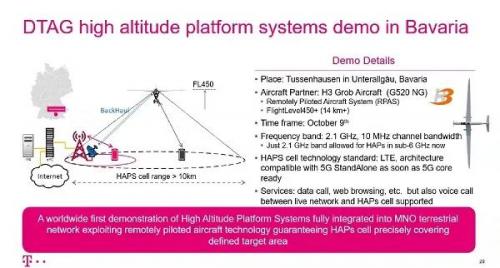 It is reported that the project was jointly developed by Deutsche Telekom and SPL (Stratosphere Platforms Limited), and SPL provides the flight platform. The project started in 2016 and has continued to invest for 5 years.
It is reported that the project was jointly developed by Deutsche Telekom and SPL (Stratosphere Platforms Limited), and SPL provides the flight platform. The project started in 2016 and has continued to invest for 5 years.
Both parties are very excited about this successful demonstration and believe that it is a model of innovation for Deutsche Telekom and the entire Europe.
Facing the future, Deutsche Telekom also announced an ambitious plan:
A large-scale antenna array consisting of 1028 antenna elements with an area of about 9 square meters installed on the flight platform can emit 200 beams, each beam corresponding to a cell, and 200 cells can form a continuous line with a diameter of about 140km on the ground at the same time Coverage.
Deutsche Telekom said that a single flight platform can deploy hundreds of cells. In theory, it only needs 30 aircraft to cover the entire Germany, 50 aircraft to cover the entire Kenya, and only 670 aircraft to cover the entire United States.
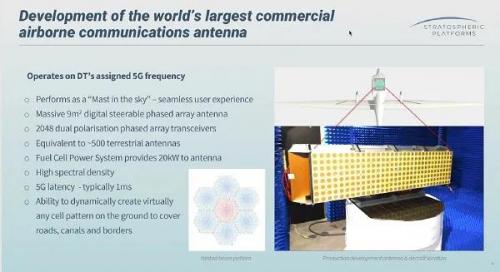 In addition, the project is also developing an antenna version that supports frequency bands below 6GHz and millimeter wave. In the future, HAPS will not only be used to solve outdoor wide coverage, but also to solve indoor coverage, deploy fixed wireless services to replace fixed-line home broadband, and coverage Aircraft etc. And adopt more advanced inter-cell coordination technology to avoid problems such as frequency interference between ground cells and HAPS cells.
In addition, the project is also developing an antenna version that supports frequency bands below 6GHz and millimeter wave. In the future, HAPS will not only be used to solve outdoor wide coverage, but also to solve indoor coverage, deploy fixed wireless services to replace fixed-line home broadband, and coverage Aircraft etc. And adopt more advanced inter-cell coordination technology to avoid problems such as frequency interference between ground cells and HAPS cells.
2 Similar to Deutsche Telekom, Japanese operator Softbank announced the establishment of a joint venture company HAPSMobile in April 2019, and also launched the HAPS plan to build an air communication system for global business.
 According to Softbank, HAPS means that the flight platform located in the stratosphere can directly connect to mobile phones and IoT terminals like a base station, and interconnect with the ground telecommunication network, thereby realizing a three-dimensional network of space and earth.
According to Softbank, HAPS means that the flight platform located in the stratosphere can directly connect to mobile phones and IoT terminals like a base station, and interconnect with the ground telecommunication network, thereby realizing a three-dimensional network of space and earth.
HAPS is located in the stratosphere at a distance of about 10 to 50km from the surface. It is higher than civil aviation aircraft and lower than satellite orbit. In addition, the air flow in the stratosphere is relatively stable and gentle. Therefore, HAPS has the advantages of satellite and terrestrial communication systems. Features such as wide coverage area, low cost, low transmission delay, and easy configuration.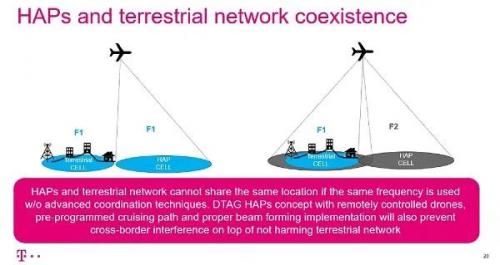
Softbank said that one HAPS can cover an area with a diameter of about 200km on the ground, and about 40 HAPS can cover the entire Japanese archipelago.
The HAPS flight platform is powered by solar energy and can continuously hover and fly at any coordinate for 6 months.
 From the perspective of SoftBank’s HAPS network architecture, the flight platform includes Service link and Feeder link. The former is a link that directly communicates with mobile phones or IoT terminals; the latter is a backhaul link, which is wirelessly connected to the ground gateway through a high-frequency band. Then connect to the mobile core network through the ground transmission network.
From the perspective of SoftBank’s HAPS network architecture, the flight platform includes Service link and Feeder link. The former is a link that directly communicates with mobile phones or IoT terminals; the latter is a backhaul link, which is wirelessly connected to the ground gateway through a high-frequency band. Then connect to the mobile core network through the ground transmission network.
For Service link, Softbank plans to use the 450MHz to 2.6GHz frequency band; for Feeder link, it will use high frequency bands such as 21GHz, 26GHz, 28GHz, 31GHz, 38GHz, 47GHz.
 3
3
While operators are keen on the innovative network architecture and service mode of “base station going to the sky”, the standards organization 3GPP is also studying NTN (Non-Terrestrial Networks, non-terrestrial network).
The dream of 5G and 6G is full connectivity and full coverage. But to realize this dream is too difficult. Operators have to spend a lot of money to build a lot of base stations, especially in remote mountainous areas. The cost of building a station is scary and there is almost no income. Even if it is not bad, how do you cover the ships traveling on the sea and the plane flying in the sky?
 The best way is to let the cellular network on the ground “reach the sky”, that is, integrate with non-terrestrial networks (NTN), such as satellite networks or UAS (Unmanned Aerial Vehicle Systems), to create a three-dimensional wide coverage.
The best way is to let the cellular network on the ground “reach the sky”, that is, integrate with non-terrestrial networks (NTN), such as satellite networks or UAS (Unmanned Aerial Vehicle Systems), to create a three-dimensional wide coverage.
As can be seen from the figure above, 3GPP’s NTN is similar to the HAPS networking architecture of Deutsche Telekom and Softbank.
Specifically, there are three types:
1) Transparent transmission of 5G NR wireless signal based on satellite
The 5G base station (gNB) is still deployed on the ground, but the NR wireless signal is transparently transmitted through the satellite and transmitted to the gNB through the ground NTN gateway. Simply put, the satellite is used as a repeater.
2) Satellite equipped with 5G base station (gNB)
3) Satellite equipped with gNB-DU
The 5G base station (gNB) is divided into CU and DU parts, and the DU part is carried on the satellite.
In order to identify business needs and help operators increase business revenue, 3GPP has also identified 12 major use cases for NTN networks, including broadcast and multicast services based on satellite coverage, and wide-area Internet of Things (NB-IoT and mMTC) based on satellite coverage. , Satellite backhaul, 5G ubiquitous connection, etc.
In the past, the terrestrial mobile communication network and the satellite industry have been developing in parallel, rarely intersecting, but now with the development of commercial aerospace and the demand for 5G and 6G, the two are converging. There is no doubt that this will strongly promote the realization of a world of intelligent connection of all things.
But in the end, NTN or “base station going to the sky” also faced some challenges, such as:
1) The satellite industry lacks uniform standards. For a long time, the mobile communication industry has been based on a unified global standard, and each G can quickly achieve ecological scale, but the satellite industry is lacking in this aspect.
2) Integrating satellite technology into mobile phones and IoT terminals will bring cost and power consumption challenges, as well as the need for the support of the global industrial chain.
3) The network capacity provided by satellites is limited, especially in supporting wireless backhaul.
4) Satellites may not be of any help to urban 5G or 6G deployment, because the ground deployment cost in these places is lower.
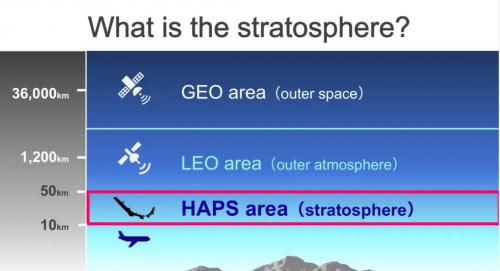
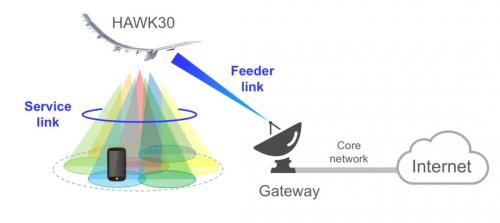
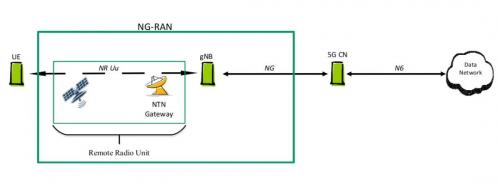
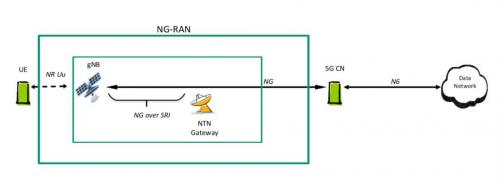
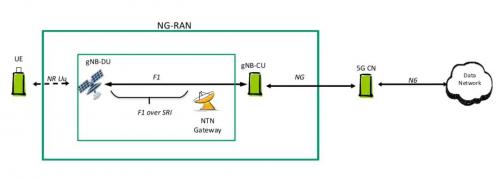
The article comes from the Internet, reminder: news and comments do not represent the position of this website






